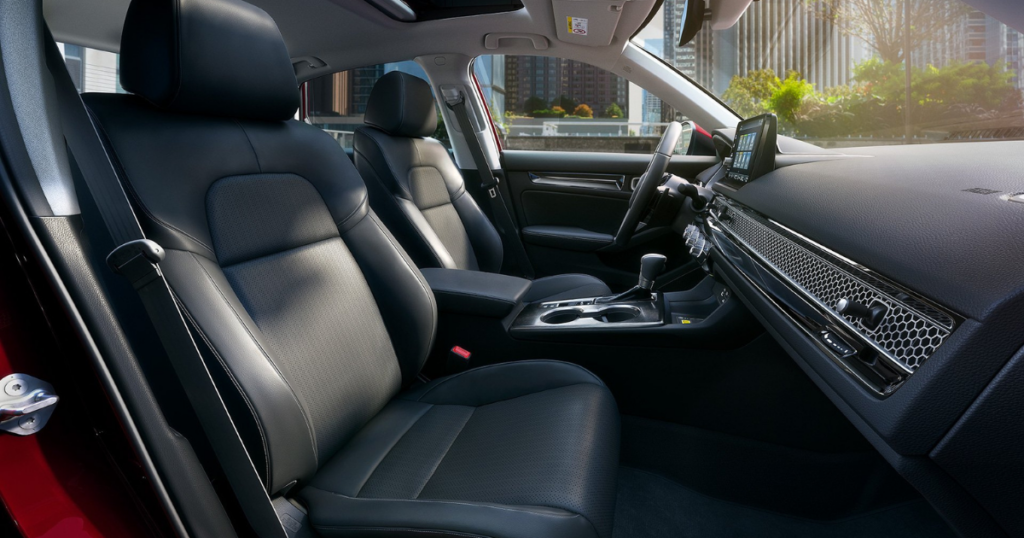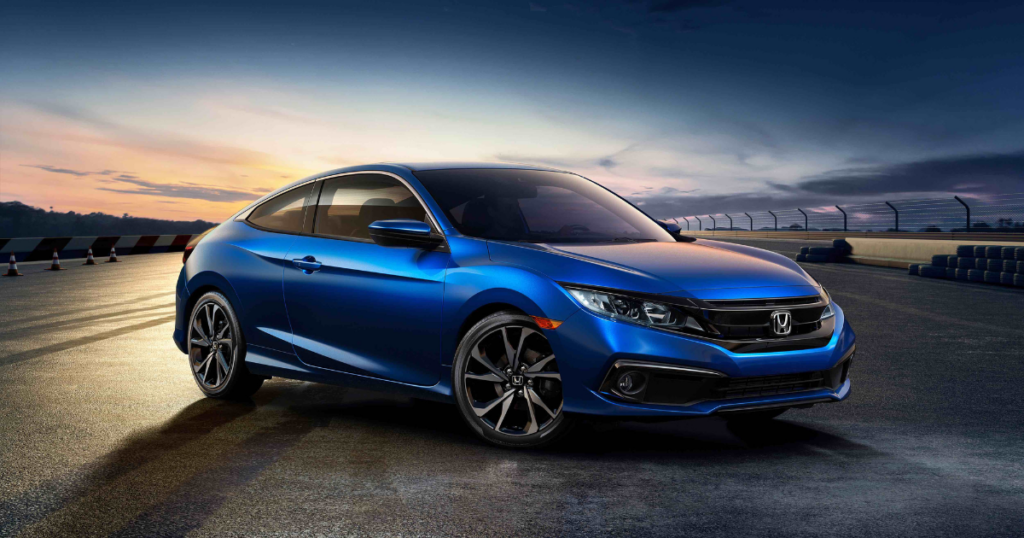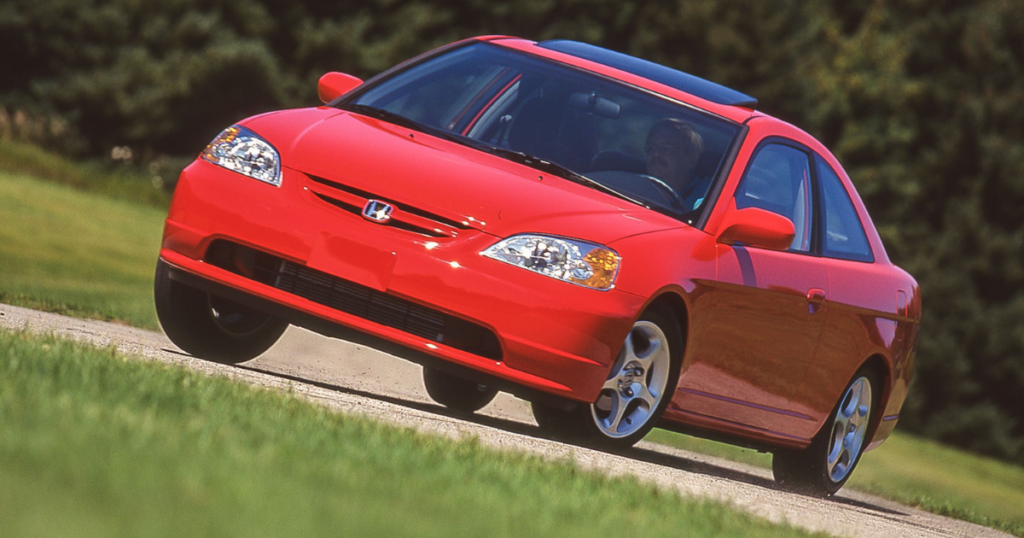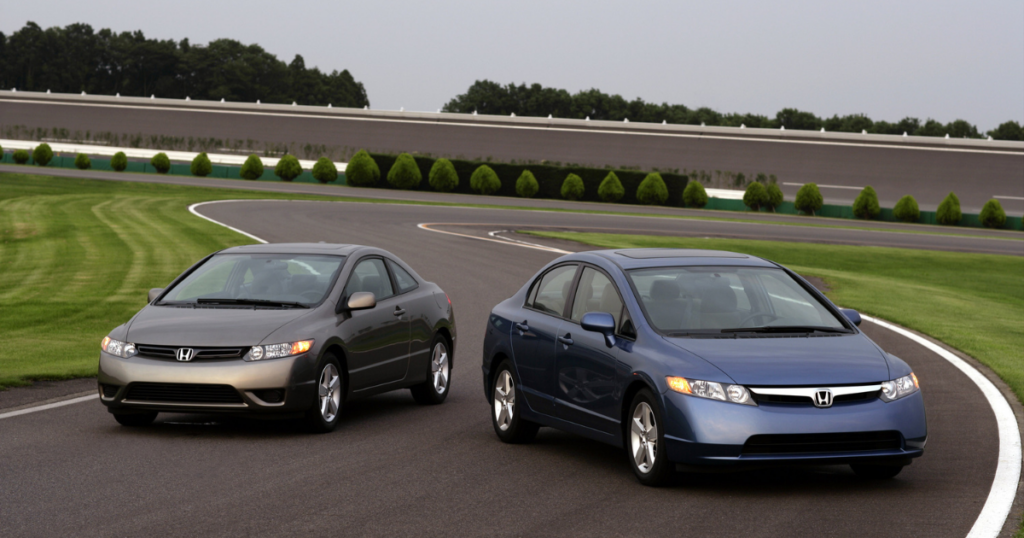
The Honda Civic is one of the best-selling vehicles in America, and it has been for many years. Honda enthusiasts still maintain many of the first-generation Civics, which were incredibly dependable automobiles. Some Civics have been on the road for over three decades! Keep reading to find out what makes these cars so reliable.
It’s not uncommon for a Civic to last up to 20 years, and you can tack on the miles during that time. You could get from 200,000 to 300,000 miles with a Honda Civic before it completely breaks down or requires extensive repairs. The transmission of your Honda Civic can last anywhere from 120,000 to 180,000 miles.
Brand Background

Founded in 1948 in Hamamatsu, Japan, Honda opened its first U.S. storefront in 1959. The first Civics for the U.S. took two years to make and were launched in 1972, thereafter winning the prestigious “Car of the Year Japan” from 1972 to 1974. It also ranked first in the 1974 U.S. Road Test magazine’s “Car of the Year.” Since then, the Civic has been the forerunner in terms of reliability and technology.
Over the company’s decades of experience in the automobile world, the company constantly looks towards the future with innovative low-emission technology and protects its customers with high-ranking safety standards, ranked #1 by the U.S. News & World Report.
Meaning of ‘Lasting Long’
This refers to how many miles or years the car can operate before it gets scrapped. More specifically, how many miles the car drives before something major goes wrong with the car, the reliability fails the driver, or a big repair is required to keep running the vehicle.
Factors of Longevity
Factors that determine how long a car will stay out on the road are:
- Vehicle Quality and Craftsmanship: The higher the quality, the longer it will last. With a car, quality matters across the board. Every part of the car’s assembly needs to be carefully manufactured, inspected, and assembled.
- How Often the Car Is Maintained: Routinely changing your oil, checking the health of your tires, looking at your battery, and replacing filters across your car is very important.
- How Many Accidents It’s Been In: This includes totaling and those fender benders. No accident is a small accident; those minor hits you thought you could ignore might cause something to pop loose 5 years down the road.
- How Quickly Repairs are Done: A dangerous instinct of most drivers is to put off minor problems until something big comes along. A tiny crack on your tire can morph into a full-blown ruptured tire. Bottom line: Perform repairs as soon as you notice damage.
- Driver’s TLC: In most cases, cars that last are those that belong to drivers who take good care of them, i.e., along with maintenance, drive at appropriate speeds, and are conscientious of not overworking their vehicle.
- Environmental Factors: The quality of roads driven on, the extent of air pollution, and unforeseen accidents such as a fallen tree can all cause a car to die out faster. Extreme cold and hot can wreak havoc on electronics and other components of a Honda Civic, resulting in a shorter life span. In addition, the type of terrain you drive your Civic on can impact its suspension, wheels, brakes, etc.
Honda Reliability
The Data
2019 Consumer Reports placed Honda in 13th place in its reliability ranking. Honda vehicles were deemed more reliable than many U.S. and E.U. models, such as Chevy, Jeep, and Tesla. In August 2019 alone, Honda sold almost 35,000 units of the Civic in just the U.S., marking a 26% increase in the model’s sales; this made up a significant portion of Honda’s overall sales. In fact, Honda itself maintains that the Civic is still the company’s “star of the show.”
According to Repair Pal, the average cost of maintaining a Honda Civic over the past 10 years (pre-2018 models) has been less than $400 per year. This helps explain why the Civic was voted the third most reliable compact car overall out of 36 models.
In Milage and Years
Honda Civics are reliable cars that are efficient, practical, and fun to drive. Expect up to 20 years of life in your Honda Civic, provided it is well cared for. In terms of mileage, keep in mind that these are subjective numbers and depend on many factors mentioned above. Generally, 200,000 to 300,000 miles with a Honda Civic are a given before it completely breaks down or requires extensive repairs.
Some details on how long you can expect certain parts of your Honda Civic to last (assuming regular use and maintenance):
- Brakes: 30,000 to 60,000 miles.
- Tires: 30,000 to 60,000 miles.
- Transmission:120,000 to 180,000 miles.
- Spark Plugs: Roughly 100,000 miles.
For a Used Civic
When deciding whether a certain used Civic is worth the purchase, make sure you follow the following general rule of thumb: an average of 12,000 miles per year indicates a well-conditioned vehicle. For example, a four-year-old Civic with 80,000 miles on the odometer means it racked up 20,000 miles per year! According to the rule mentioned, this signals a vehicle that has experienced excessive use.
Before purchasing a used Civic or any vehicle, you should consider how often you will use it. The fewer miles a used car has already been driven, the more you can use it for and the longer you can keep it.
Honda Features that Contribute to its Longevity
Using a Forge Instead of a Cast

These are two different manufacturing styles used for the engine in particular. Honda employs the forging technique, ensuring its engines last a long time.
- Casting: Molten metal is poured into a mold and allowed to cool. Benefit: It is cheap, and parts are made quickly. Drawback: The parts made this way are physically much weaker.
- Forging: Force and compression shape a car part, similar to smithing. This produces resilient and reliable parts, even after a long time.
Overengineered Engine

This simply means that the engine never achieves the maximum performance it was built for. As soon as an automobile reaches its redline and begins using all of its available power, the engine’s lifespan begins to decline.
Too much of it can potentially spell tragedy. Let us assume, for the sake of argument, that Honda’s engineers planned for the engine to achieve 300 mph but ultimately limited it to 175 mph. As a result of the difference between the actual and the specified speed limit, the engine will survive longer.
Simple Features
The more complex features a car has incorporated, the more parts you have that can break down and, therefore, need to be replaced. Thus, the simpler the design, the fewer parts break down, and the longer a car will last.
This is the principle employed by Civic; no fancy add-ons like single-touch open trunks, headlight wipers, or gullwing doors ensure minimum breakdowns. These non-exclusive parts are also cheap to replace.

High-Quality Parts
Simplicity does not mean that Honda compromises on the quality. In fact, the Japanese manufacturer has such strict specifications and requirements that suppliers often find their shipments returned because they did not meet the set-out quality standards.
Designed for Everyday Use and Easy Maintainance
Honda Civics are not vehicles focused on being fast, powerful, or record-setters out on the track. Except for the Type R sub-model of a Civic, you won’t get a sporty car when you order a Civic.
They’re designed to be daily drivers that reliably run forever. Their design focus is on reliability, convenience, and ease of maintenance over time. Replacement parts are inexpensive and easily available.
Attract More Conscientious Drivers
A Civic is marketed towards someone who wants a reliable car, takes good care of their vehicle, and isn’t looking for a loud or powerful car. Compared to certain other drivers, these drivers are generally thought to be more responsible, slightly safer, and more cautious on the road. Someone who invests in an M-series BMW isn’t going to handle curves with the same delicacy as someone who drives a Honda Civic.
Related: 10 Best Cheap Reliable Cars in the Market 2023
Variation Among Models
Reliable Models

The Honda Civic has a history of excellent reliability, but certain model years stand out. When buying a used Civic, generally, any model from the past 10 years is a safe bet. These relatively newer Civics were built with more advanced technology, making them less prone to issues.
It’s highly suggested that you choose a 2012 or 2014 Honda Civic since very few owners had problems with these models. In particular, the 2019 Honda Civic has received positive feedback from customers. Durability complaints are low, making it a better choice if you want your car to last.
Models to Avoid
2001 Honda Civic
Surveying consumer complaints, it seems that this model had excessive issues. In total, this model had over 1100 complaints with the NHTSA. The National Highway Traffic Safety Administration also reports 26 recalls for this model.
The transmission was chalked up to be the main reason, with complaints ranging from the transmission repeatedly failing to not engaging, slipping while in use, and going out of gear.

2006-2009 Honda Civics

In these models, the engine blocks may crack; coolant leaks leading to overheated engines are another problem. This can ultimately lead to the engine dying. This damaged engine is costly to repair.
Extending Your Honda’s Lifespan
Regular Maintainance
The better your Civic is taken care of, the longer it will last. For this, follow a maintenance schedule (detailed below); a routine check should include checking the brakes, tires, alignment, and engine. Check and replace fluids as needed, such as oil, brake fluid, antifreeze, and windshield wiper fluid. If replacement parts are required, invest in factory-approved, high-quality products.
Maintainance Schedule
1-year Service or 15000 miles
In either of these cases, Honda recommends changing the oil and rotating the tires. Other changes include brake fluid replacement, cabin air filter replacement, and parking brake adjustment. Inspection of exhaust, suspension, and cooling systems for any signs of excessive wear and tear should be done by a certified Honda technician.
2-year Service or 30,000 miles
Repeat all services done at the 1 year/ 15,000 miles. Add inspected and possible replacement of brake pads to the schedule. Brake pad wear varies depending on your driving habits or how often you drive.
4-year Service or 60,000 miles
All previous services are repeated now with the addition of inspection of all fluid levels and their condition. If not needed before, your Civic’s transmission fluid should be changed by 60,000 miles.
Maintainance Minder
Newer models have this feature. It alerts you with specific codes when specific maintenance tasks need to be performed, including:
- Main Code A: Oil change.
- Main Code B: Inspect brakes, check parking brake adjustment, oil change, and oil filter replacement.
- Subcode 1: Tire rotation.
- Subcode 2: Inspect the drive belt, replace the cabin air filter, and inspect the fuel tank.
- Subcode 3: Replace transmission fluid.
- Subcode 4: Spark plug replacement.
- Subcode 5: Replace engine coolant.
Drive Responsibly
Aggressive driving shortens the life of any vehicle. Stopping and starting quickly can wear out the brake pads. Avoid driving at high speeds and making abrupt turns to save your tires. To avoid placing undue strain on the suspension, proceed cautiously while approaching obstacles like speed bumps.
Be Proactive About Rust Prevention
Get your Honda Civic washed, waxed, and detailed if you reside on the coast or in the north, where salt and snow can cause rust. Rust is more severe when it forms on bare metal, such as in a large scratch in the paint or on an unprotected area of the Civic’s frame or body panels. In snowy weather, the undercarriage of the Civic is especially vulnerable to rust.
Ensure that all the protective plastic lining in the Civic’s wheel wells and underneath the car are intact and not damaged. Wash and dry your car after you’ve been driving on salt-covered roads. Buy rust repair kits and survey your vehicle regularly.
Invest in Comprehensive Insurance
You need fast, high-quality service if you’ve been in an accident or your car is having problems. You can get the money you need to pay for repairs with the help of comprehensive insurance. Depending on factors such as the age of the vehicle and your driving record, the annual insurance cost for a Honda Civic is approximately $1,836.
Bottom Line
The Honda Civic is dependable, but keeping it that way could be difficult. The Honda Civic is a safe, reliable, and economical vehicle, despite a few model years being more problematic than others, according to data and owner experience. However, as technological advances in the auto industry continue, it may become more difficult for Honda to maintain the Civic’s reliability in the years to come.




